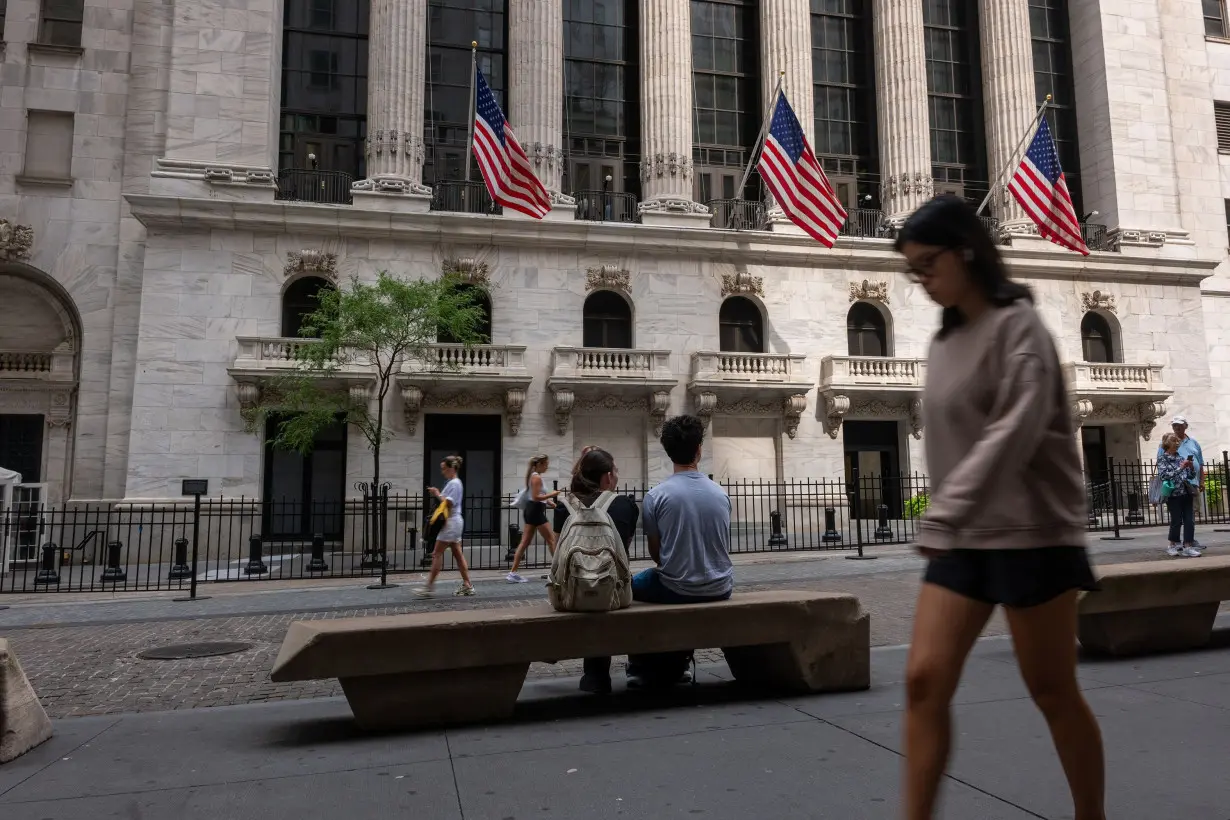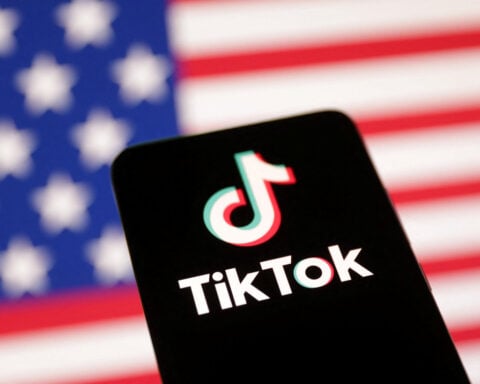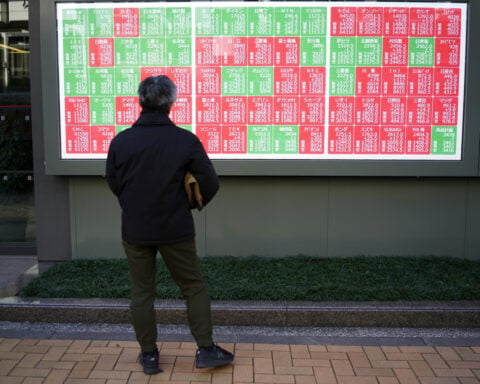New York (CNN) — Wall Street is undergoing a palpable vibe shift.
Strong corporate earnings have helped stocks notch repeated record highs in 2024, despite stubborn inflation forcing investors to dial down their expectations for how many times the Fed will cut rates this year.
But cooling inflation data in recent weeks has led Wall Street to bet that the Federal Reserve will finally cut interest rates in September — and that there are now more options for gains beyond just the Big Tech stocks that have dominated the market this year.
Data released Friday morning showed the Personal Consumption Expenditures price index, the Fed’s preferred inflation gauge, slowed to 2.5% for the 12 months ended in June — another sign for hopeful investors that inflation is continuing to ease from its four-decade high.
The Dow jumped 654 points, or 1.6%, on Friday after soaring more than 800 points earlier in the day. The S&P 500 gained 1.1% and the Nasdaq Composite added 1%.
For the week, the S&P 500 and Nasdaq fell while the Dow notched a gain.
Economic data has also remained remarkably resilient even as rates stay at a 23-year high. That, coupled with the slowdown in inflation, has raised hopes that the central bank could tame prices without triggering a recession, a feat it has achieved just once since the 1990s, according to some economists. Data Thursday showed the economy expanded at a robust 2.8% annualized rate during the second quarter, blowing past economists’ expectations.
Wall Street will get more clues about the Fed’s next moves at its policy meeting next week, where the central bank is expected to hold rates steady. While the Fed has penciled in just one rate cut for this year, traders are betting on up to three, according to the CME FedWatch Tool.
Big Tech gets pummeled
Brightening prospects for rate cuts typically signal good news for stocks, since the market tends to do better when higher borrowing rates don’t weigh down companies’ balance sheets. But you wouldn’t know that from the carnage in stocks this week.
While the market was broadly higher on Friday, the S&P 500 and Nasdaq on Wednesday logged their worst daily performances since 2022.
The reason behind the selloff: Investors are shedding shares of the Magnificent Seven tech stalwarts that have dominated the market for the past two years, and their large weighting has dragged down the major indexes. Tech companies make up 32% of the total market capitalization, the highest level since the late 1990s, according to MRB Partners data as of June 28.
An underwhelming start to the earnings season for the cohort has only intensified its declines: Tesla shares tumbled 12.3% on Wednesday after the electric vehicle-maker reported a more than 40% plunge in profits the prior evening. Alphabet shares slipped 5% after beating earnings expectations but missing analysts’ expectations for YouTube advertising revenue.
Smaller stocks prevail
One area that has benefited recently from the prospect of lower rates is small-cap stocks.
Shares of smaller companies tend to perform poorly when rates are high, since they have more floating rate debt than their larger counterparts. But they have historically tended to perform well when the Fed begins easing its high borrowing rates.
The Russell 2000 index, which tracks the performance of small-cap stocks, has gained 10.4% so far this month, outperforming the S&P 500’s 0.03% loss.
Investors are also picking at other areas of the market poised to gain when rates come down. Stephen Lee, founding principal at Logan Capital, said his firm added to its position in homebuilder stocks earlier this quarter, betting that cooling inflation would allow the Fed to cut rates and ease the ultra-tight housing market.
Sky-high interest rates have led homeowners to hold off on selling their homes to keep their pandemic-era low mortgage rates even as demand surged, driving up home prices to record levels.
More pain for Big Tech?
Investors have fretted over the past year that the market’s gains are beholden to just a handful of tech stocks, making the rally more vulnerable to pullbacks a few stocks stumble. The Magnificent Seven drove about 60% of the S&P 500’s total return during the first half of the year, according to Adam Turnquist, chief technical strategist at LPL Financial.
The recent gain in small-caps is making some investors hopeful that the market rally will continue to broaden.
There are signs that the pain in tech shares might not be over yet. Tech stocks’ steep losses following tepid quarterly results from Alphabet and Tesla suggest that investors are growing impatient with companies investing hefty sums into artificial intelligence with little to show for it in terms of revenue gains.
Many big tech firms have released AI chatbots and other flashy consumer tools since OpenAI’s ChatGPT kicked off the AI arms race two years ago, but the path to monetizing the technology remains unclear.
On Alphabet’s Tuesday earnings call, UBS analyst Stephen Ju noted that the initial use cases of the AI models that Big Tech firms have invested in building “are more on the cost savings or efficiency side.”
“When do you think we’ll start thinking about products that can help revenue generation for the Fortune 500, Fortune 1000 companies, which is probably something that can, hopefully, create greater value over time, versus just cutting costs?” Ju said.
As the AI arms race continues to heat up, companies are unlikely to slow their spending on AI. But it’s unclear when those investments will provide a boost to their balance sheets.
“The risk of underinvesting is dramatically greater than the risk of overinvesting for us here,” Alphabet CEO Sundar Pichai said on the call.
As stocks settle after the trading day, levels might change slightly.
The-CNN-Wire
™ & © 2024 Cable News Network, Inc., a Warner Bros. Discovery Company. All rights reserved.

 A look at the events that led up to the detention of South Korean President Yoon Suk Yeol
A look at the events that led up to the detention of South Korean President Yoon Suk Yeol
 The long struggle to establish Martin Luther King Jr. Day
The long struggle to establish Martin Luther King Jr. Day
 Two private lunar landers head toward the moon in a roundabout journey
Two private lunar landers head toward the moon in a roundabout journey
 Trump's Greenland bid stirs debate in China about what to do with Taiwan
Trump's Greenland bid stirs debate in China about what to do with Taiwan
 TikTok preparing for U.S. shut-off on Sunday, The Information reports
TikTok preparing for U.S. shut-off on Sunday, The Information reports
 Japan's Makino Milling requests changes to unsolicited bid from Nidec
Japan's Makino Milling requests changes to unsolicited bid from Nidec
 As Los Angeles burns, Hollywood's Oscar season turns into a pledge drive
As Los Angeles burns, Hollywood's Oscar season turns into a pledge drive
 As fires ravage Los Angeles, Tiger Woods isn't sure what will happen with Riviera tournament
As fires ravage Los Angeles, Tiger Woods isn't sure what will happen with Riviera tournament
 Antetokounmpo gets 50th career triple-double as Bucks win 130-115 to end Kings' 7-game win streak
Antetokounmpo gets 50th career triple-double as Bucks win 130-115 to end Kings' 7-game win streak








